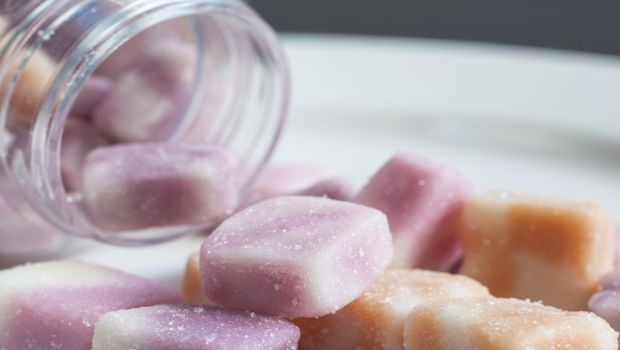Manufacturing gummies isn’t all sweetness–it has several challenges. The sugar-gelatin matrix means that most gummies only have room for about 5-percent active ingredients. Some ingredients, like certain B vitamins, proteins and enzymes, don’t hold up well during gummies’ high-temperature processing. And since the supplements are chewed before being swallowed, active ingredients with strong flavors need to be masked. What’s more, high moisture content and heat sensitivity means that gummies tend to have a shorter shelf life than capsules. Still, manufacturers have found success overcoming these issues and developing gummies that are potent as well as appealing. By becoming familiar with the unique properties of various active ingredients, it’s possible to make gummies that taste great and manage to deliver the amount of nutrient listed on product labels.
February 9, 2015

Manufacturing gummies isn’t all sweetness–it has several challenges. The sugar-gelatin matrix means that most gummies only have room for about 5-percent active ingredients. Some ingredients, like certain B vitamins, proteins and enzymes, don’t hold up well during gummies’ high-temperature processing. And since the supplements are chewed before being swallowed, active ingredients with strong flavors need to be masked. What’s more, high moisture content and heat sensitivity means that gummies tend to have a shorter shelf life than capsules. Still, manufacturers have found success overcoming these issues and developing gummies that are potent as well as appealing. By becoming familiar with the unique properties of various active ingredients, it’s possible to make gummies that taste great and manage to deliver the amount of nutrient listed on product labels.
You May Also Like




.png?width=800&auto=webp&quality=80&disable=upscale)